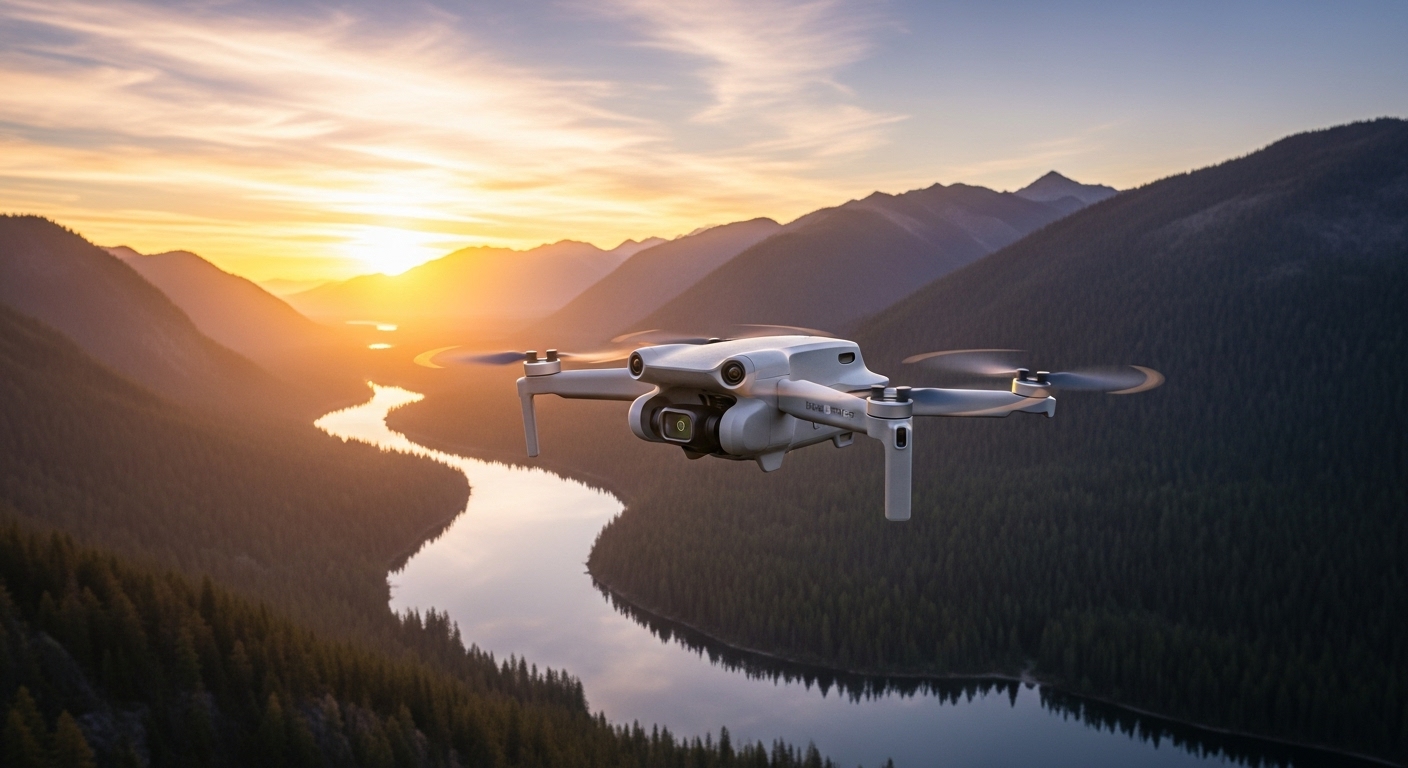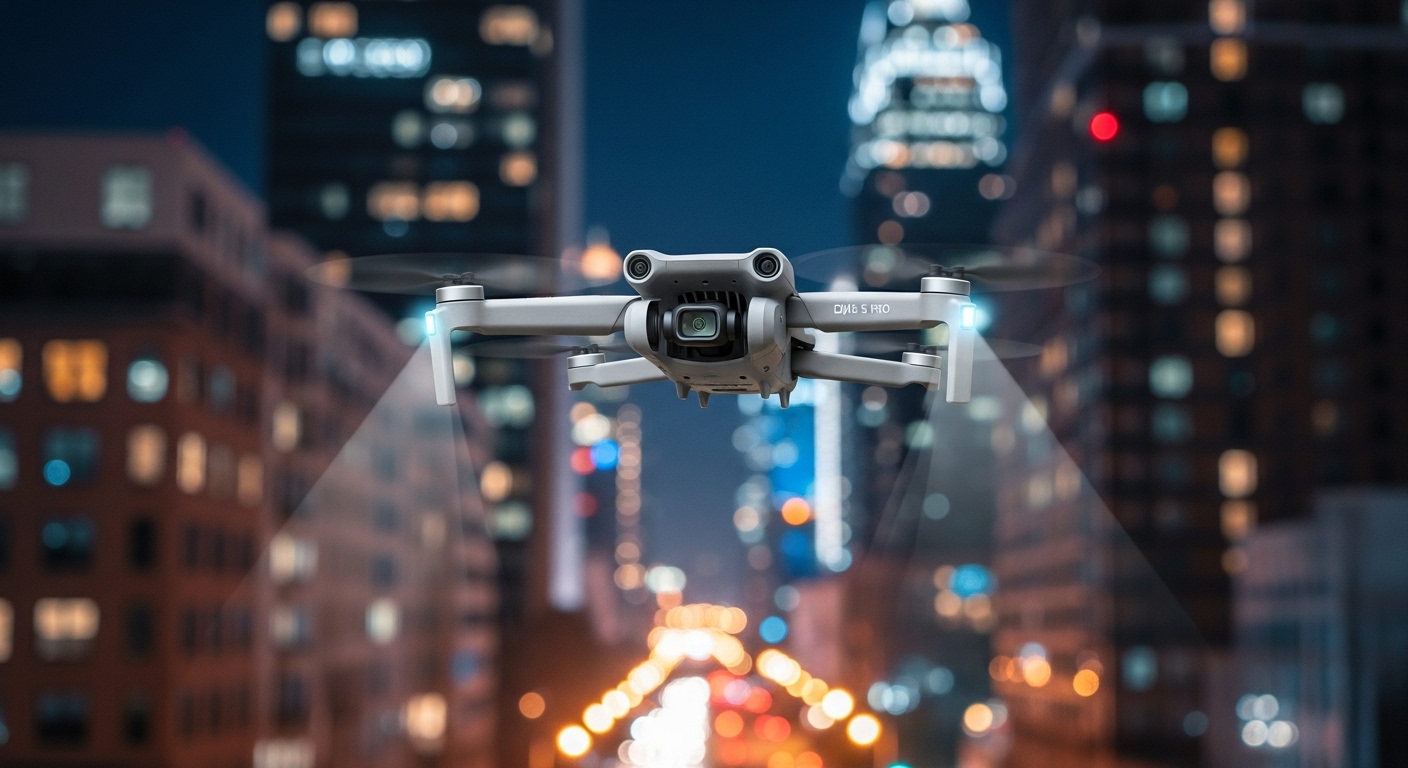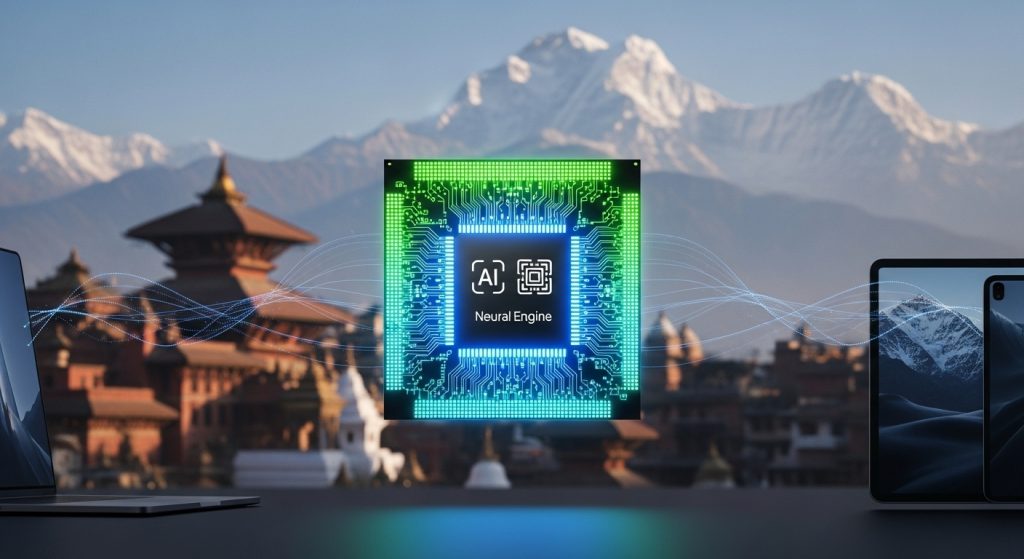DJI Mini 5 Pro Comparison: New King of Sub-250g Drones?
The Definitive Comparison: DJI Mini 5 Pro and Its Competitors
Executive Summary: The New King of the Sub-250g Class
The Paradigm Shift
The release of the DJI Mini 5 Pro marks a significant event in the consumer drone market, signaling a fundamental shift in what is possible within the sub-250g weight class. Historically, drones weighing less than 250 grams have been characterized by their extreme portability and relaxed regulatory status, but often with compromises in imaging quality, safety, and advanced features. The Mini 5 Pro challenges this paradigm by introducing professional-grade capabilities previously reserved for larger, more expensive aircraft. It is not merely an incremental update to its predecessors but a category-defining product that blends unparalleled portability with advanced hardware and software. The inclusion of a larger imaging sensor, a revolutionary multi-axis gimbal, and a new LiDAR-based sensing system fundamentally changes the creative and safety possibilities for pilots operating a mini drone.
Key Advantages at a Glance
The primary competitive differentiators of the DJI Mini 5 Pro are centered on three key pillars: imaging excellence, enhanced safety, and expanded creative freedom. The new 1-inch CMOS sensor provides a substantial leap in image quality, particularly in challenging lighting conditions, enabling cinematic capture in low-light environments that were once prohibitive for this class of drone. This imaging power is complemented by a redesigned gimbal that offers 225° of roll rotation, unlocking dynamic camera movements and unique perspectives for videographers. Furthermore, a new level of safety has been introduced with the addition of forward-facing LiDAR, which enhances obstacle sensing and subject tracking, especially during nighttime flights. The combination of these features firmly positions the Mini 5 Pro at the pinnacle of the mini drone market, distinguishing it from its competitors and setting a new benchmark for performance.
The Verdict
Based on a detailed analysis of its feature set, technical specifications, and real-world performance observations, the DJI Mini 5 Pro is the new benchmark for sub-250g drones. While its premium pricing reflects its advanced capabilities, it offers a compelling value proposition for serious creators and professionals who require a highly portable, yet uncompromising, tool. For pilots who demand the best possible image quality, advanced safety features, and expanded creative controls in a compact form factor, the Mini 5 Pro is the definitive choice.

The Contenders: A Competitive Landscape Analysis
DJI Mini 5 Pro
As the newest flagship in the Mini series, the DJI Mini 5 Pro is engineered to be an all-in-one solution for creators who demand performance without the burden of a heavy, regulated aircraft. Its value proposition is built on unprecedented imaging and safety features for its class. At a takeoff weight of 249.9g, it remains exempt from many regulations, including FAA registration for recreational use in the United States. The drone’s feature set, including its 1-inch sensor, 4K/120fps video, Nightscape omnidirectional sensing, and forward-facing LiDAR, is an explicit statement by DJI that the mini drone category is ready for professional applications.
DJI Mini 4 Pro
The DJI Mini 4 Pro is the direct predecessor and a formidable competitor that, until recently, defined the prosumer mini drone segment. It set the standard for its class with a sub-249g weight, omnidirectional obstacle sensing, and a suite of intelligent flight modes like ActiveTrack 360° and Waypoint Flight. The Mini 4 Pro’s 1/1.3-inch sensor and ability to capture 4K/100fps slow-motion video were once considered top-of-the-line for its size. Although superseded by the Mini 5 Pro’s latest advancements, the Mini 4 Pro remains an excellent and highly capable drone, offering a compelling feature set at a lower price point.
Autel EVO Nano+
The Autel EVO Nano+ serves as a key alternative from a primary competitor, Autel Robotics. This drone also falls into the sub-250g category, with a takeoff weight of 249g. It offers a competitive package with a 1/1.28-inch sensor and three-way (forward, backward, downward) obstacle sensing. The EVO Nano+ provides a solid balance of features and performance for its price, including 4K video capture and raw photo capabilities, making it an attractive option for value-conscious creators who may prefer not to buy DJI drones.
HoverAir X1 Pro Max
The HoverAir X1 Pro Max is a niche product that operates in a different market segment altogether. This “flying action camera” prioritizes autonomous tracking and extreme portability over manual control and range. Weighing just 192.5 grams, its design is geared toward quick, pre-programmed shots and personal tracking, making it a specialized contender for vloggers and social media creators. While it boasts impressive specifications like 8K video capture, real-world performance is not always consistent, and its short flight time and limited range position it as a complementary device rather than a primary camera drone.
Deep Dive 1: Imaging & Creative Capabilities
The 1-Inch Sensor Revolution: A Leap in Image Quality
The most significant upgrade to the DJI Mini 5 Pro is its 1-inch CMOS sensor, a first for a drone in this weight class. This is a substantial physical size increase over the Mini 4 Pro’s 1/1.3-inch sensor. The larger sensor area, approximately 68% greater than its predecessor, is a critical upgrade for aerial imaging. A larger sensor gathers more light, which directly correlates to a higher signal-to-noise ratio. This is not just a theoretical benefit; it results in a tangible reduction of image noise at higher ISO settings and an increased ability to capture detail in both shadows and highlights. This is particularly crucial for cinematic footage captured during periods of high contrast, such as sunrise and sunset, or in low-light urban nightscapes. The Mini 5 Pro’s maximum ISO in normal color mode has been raised to 12800, double that of the Mini 4 Pro’s 6400, providing greater flexibility in challenging light. A comparison of footage between the two drones confirms that the Mini 5 Pro is “much much better” and “a lot noisier” in low light, validating that this upgrade transforms the drone from a daytime-only tool into a capable four-season, day-or-night platform.
Unleashing Creative Freedom: The Redesigned Gimbal
Beyond the sensor, the Mini 5 Pro introduces a redesigned gimbal that is a game-changer for creative expression. The new system allows for a remarkable 225° of roll rotation, a feature not found on the Mini 4 Pro or most other consumer drones. This capability moves beyond simple vertical shooting for social media content to enable dynamic, cinematic camera movements, such as barrel rolls, without requiring complex flight maneuvers. The ability to capture “eye-catching rotating footage” can be controlled manually or integrated with intelligent flight modes like QuickShot Rotate and Waypoint Flight. This represents a significant step by DJI to make advanced cinematic techniques more accessible to a broader audience. A reviewer noted that this new gimbal is a “much better concept” than the “Infinity gimbal on Mavic 4 Pro” because the true vertical mode is less restricted, which further highlights its practical superiority.
Video and Stills: The Specifications That Matter
The DJI Mini 5 Pro’s video specifications are tailored for professional videographers. It supports 4K/60fps HDR video, with a major upgrade to 4K/120fps slow-motion, which provides “smoother motion and less blur” compared to the Mini 4 Pro’s 4K/100fps slow-motion. For post-production, the drone records 10-bit video using H.265 encoding, offering D-Log M and HLG color modes with a maximum ISO raised to 3200. These features provide a higher dynamic range and more refined color performance, offering greater flexibility for color grading.
In contrast, while the HoverAir X1 Pro Max boasts a headline-grabbing 8K/30fps video resolution and a high 160Mbps bitrate, user reviews reveal that the footage can be “choppy as hell” and suffer from playback issues. This illustrates that a high-resolution number is not an indicator of a superior user or a professional experience without the underlying hardware and software stability to support it. The DJI Mini 5 Pro’s incremental but well-engineered upgrades are more reliable and practical for a professional workflow than a competitor’s unstable, headline-grabbing features. The Autel EVO Nano+ supports 4K/30fps with a 100Mbps bitrate, which is a solid but less versatile offering for videographers who require high frame rates for slow-motion.
Deep Dive 2: Flight Performance, Safety & Autonomy
Engineering the Perfect Flight
The flight performance gains of the Mini 5 Pro, while seemingly minor, reflect a deeper optimization of its propulsion, battery, and aerodynamics. The standard flight time has been increased to 36 minutes, a two-minute gain over the Mini 4 Pro’s 34 minutes. With the optional Intelligent Flight Battery Plus, the Mini 5 Pro can achieve a maximum flight time of 52 minutes, compared to the Mini 4 Pro’s 45 minutes. For a drone weighing under 250g, these gains are a significant engineering achievement. A longer flight time means more time to capture footage and less time spent on the ground swapping batteries. The Mini 5 Pro also boasts a higher maximum wind resistance of 12 m/s, up from the Mini 4 Pro’s 10.7 m/s. This increased stability makes the drone more reliable in challenging outdoor conditions.
The contrast with the HoverAir X1 Pro Max is stark.
The HoverAir offers only 16 minutes of flight time, and one user account describes losing the drone entirely after a signal loss over water, emphasizing the critical importance of DJI’s focus on reliable flight stability and engineering. This robust, mature ecosystem is a crucial factor for a professional-grade device.
4.2. A New Standard in Safety: LiDAR and Nightscape
Safety has been a major point of differentiation for DJI, and the Mini 5 Pro introduces a new standard by integrating forward-facing LiDAR. Vision-based obstacle sensing, which the Mini 4 Pro also utilizes, relies on ambient light to function. While effective during the day, its performance is significantly reduced in low-light environments. LiDAR, which uses laser pulses, is not dependent on visible light. This allows the Mini 5 Pro’s omnidirectional sensing system to “actively detect and avoid obstacles” even at night, making nighttime Return-to-Home (RTH) “safer” and providing pilots with a higher degree of confidence in complex, low-light urban environments. The Autel EVO Nano+ provides three-way obstacle sensing, but the absence of a LiDAR system means it cannot provide the same level of confident, low-light obstacle avoidance. The lack of a robust avoidance system on the HoverAir X1 Pro Max is cited as a major source of user dissatisfaction and even device loss, which highlights DJI’s strategic focus on safety as a core, functional feature.

4.3. Intelligent Flight Modes: Smarter Than Ever
The DJI Mini 5 Pro continues to build upon the legacy of its predecessors with an “upgraded ActiveTrack 360°“. The success of ActiveTrack depends on the drone’s ability to accurately perceive and predict subject movement while simultaneously avoiding obstacles. The Mini 5 Pro’s new LiDAR system enhances this capability, providing the tracking system with more reliable data, especially at night. This integration of advanced hardware and software provides a more reliable and refined user experience.
The Autel EVO Nano+ also features its own automated modes, such as Dynamic Track, Quickshots, and Orbit. The HoverAir X1 Pro Max is built almost entirely on its autonomous tracking features, boasting a maximum auto-follow speed of 26 mph. However, user reports of “choppy as hell” video and random disconnections during automated flight modes suggest a fundamental hardware or software issue with its systems. This reinforces the value of DJI’s deep, reliable integration of hardware and software, which gives pilots confidence in features like its “brilliant dynamic home point feature“.
5. Deep Dive 3: Design, Portability & Ecosystem
5.1. The Power of Portability: Under 250 Grams
All the drones in this comparison—the DJI Mini 5 Pro, DJI Mini 4 Pro, and Autel EVO Nano+—share a foundational design philosophy centered on a takeoff weight under 250g. This is not merely a number; it is a critical design choice that enables a new class of powerful, accessible drones with fewer regulatory hurdles, particularly in the United States and the European Union. The engineering challenge for these companies is to pack an increasing number of high-end features—such as a 1-inch sensor, LiDAR, and omnidirectional sensing—into a package that remains below this critical threshold. The Mini 5 Pro’s ability to achieve this while introducing substantial new hardware demonstrates a significant miniaturization and power-to-weight ratio advantage, solidifying its place as a professional-grade tool that retains the convenience of a recreational drone.
5.2. Storage & Connectivity: Addressing Pain Points
The DJI Mini 5 Pro addresses a long-standing pain point for drone pilots with a monumental upgrade in internal storage. The drone features 42GB of onboard storage, a significant leap from the Mini 4 Pro’s meager 2GB. This upgrade is a direct response to user feedback and provides a major quality-of-life improvement, acting as a reliable backup in case a microSD card is forgotten or fills up during a flight.
Furthermore, the Mini 5 Pro introduces an “off-state transfer” feature, allowing users to transfer files via a USB-C cable without having to power on the drone. This indicates a deeper design consideration for workflow efficiency. The Mini 5 Pro also supports microSD cards up to 1TB, compared to the Mini 4 Pro’s recommended capacity of 512GB, offering expanded storage potential for professional workflows. These thoughtful improvements highlight a user-centric development process that goes beyond flashy new sensors to address real-world inconveniences.
6. Value & Market Positioning
6.1. Pricing and Bundles: A Tiered Approach
The pricing strategy for the DJI Mini 5 Pro clearly establishes a new premium tier within the sub-250g market. The base kit, which includes the drone and the DJI RC-N3 controller, starts at USD $769. This is a higher entry point than its competitors. For comparison, the Autel EVO Nano+ starts at USD $679, while the HoverAir X1 Pro Max begins at USD $699.
DJI is confident that the Mini 5 Pro’s advanced features—including the 1-inch sensor, LiDAR, and rotating gimbal—justify its higher price point. This allows the company to create a distinct segmentation from its predecessor, the Mini 4 Pro, which has a Fly More Combo priced around USD $1,297. The Mini 5 Pro is no longer competing solely on a like-for-like basis with other mini drones; it is offering a feature set that was previously restricted to heavier, more expensive drones like the DJI Air 3S. For the consumer, the decision becomes a choice between a more basic, value-oriented drone from a rival or an older DJI model, and a truly professional, feature-rich model that pushes the boundaries of the weight class.
7. Conclusion & Recommendations: The Definitive Verdict
7.1. The Ultimate Comparison Table
The following table provides a concise, at-a-glance comparison of the key specifications and features of the top contenders in the sub-250g drone market.
| Feature | DJI Mini 5 Pro | DJI Mini 4 Pro | Autel EVO Nano+ | HoverAir X1 Pro Max |
|---|---|---|---|---|
| Takeoff Weight | 249.9g | Sub 249g | 249g | 192.5g |
| Sensor Size | 1-inch CMOS | 1/1.3-inch CMOS | 1/1.28-inch CMOS | 1/1.3-inch CMOS |
| Max Photo Resolution | 50MP | 48MP | 50MP | 48MP |
| Max Video Resolution | 4K/60fps HDR | 4K/60fps HDR | 4K/30fps | 8K/30fps |
| Max Slow-Mo | 4K/120fps | 4K/100fps | FHD/60fps | 4K/120fps |
| Max Flight Time (Standard) | 36 minutes | 34 minutes | 28 minutes | 16 minutes |
| Max Flight Time (Plus) | 52 minutes | 45 minutes | N/A | N/A |
| Max Wind Resistance | 12 m/s | 10.7 m/s | 10.7 m/s | 10.7 m/s |
| Obstacle Sensing | Nightscape Omnidirectional, Forward LiDAR | Omnidirectional | 3-way (Forward/Backward/Downward) | Rear, Vision-based |
| Internal Storage | 42GB | 2GB | None | 64GB |
| Gimbal Rotation | 225° Roll + True Vertical | True Vertical | True Vertical (Software) | 2-axis + EIS |
| Starting Price (USD) | $769 | $669 | $679 | $699 |
7.2. Final Verdict: A New Professional Standard
The DJI Mini 5 Pro has cemented its place as the definitive leader in the sub-250g drone category. While competitors like the DJI Mini 4 Pro and Autel EVO Nano+ offer compelling features and value, none match the Mini 5 Pro’s comprehensive package of professional imaging, advanced safety systems, and creative flexibility. It is the first “mini” drone that a serious professional can confidently add to their kit without feeling that they are compromising on core capabilities. The fusion of a 1-inch sensor with LiDAR-enhanced obstacle sensing and a revolutionary gimbal system makes it an unparalleled tool for its size.
7.3. Tailored Recommendations
-
For the Serious Prosumer/Professional: The DJI Mini 5 Pro is the clear and unequivocal choice. Its 1-inch sensor, LiDAR-based safety, and 225° rotating gimbal will unlock new cinematic and low-light opportunities that are not available on any other drone in its class. The higher price point is justified by the professional-level output it provides in a truly portable form factor.
-
For the Value-Conscious Creator: The DJI Mini 4 Pro remains an excellent option. It offers a vast majority of the Mini 5 Pro’s features—including omnidirectional obstacle sensing and True Vertical Shooting—at a lower price point. It represents the pinnacle of the previous generation and is a highly capable drone that will satisfy most creators’ needs.
-
For the Budget-Minded Beginner: For those entering the hobby on a budget, a model like the Autel EVO Nano+ or the Potensic Atom 2 offers a great entry point. They provide essential features like 4K video and some obstacle avoidance at a fraction of the cost, allowing new pilots to learn and grow without a significant financial commitment.
-
For the Specialized User: The HoverAir X1 Pro Max is a niche product best suited for those who prioritize autonomous tracking and a minimalist flying experience. Its value is in its role as a “flying camera assistant” rather than a versatile manual control drone. However, users should be aware of its potential reliability issues and limited range, which may not be suitable for all applications.
📚 For more insights, check out our digital marketing strategies in Nepal.


